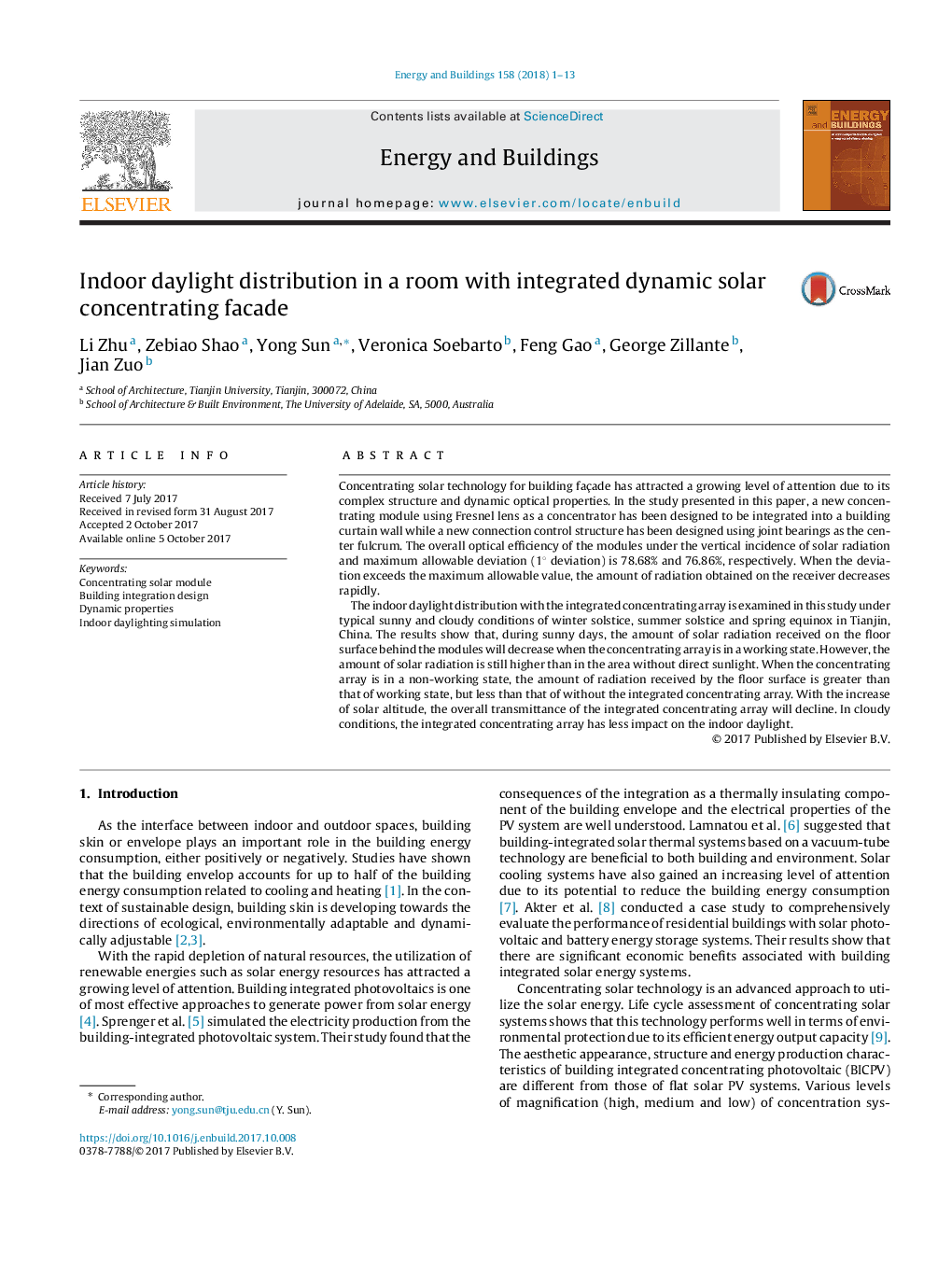| کد مقاله | کد نشریه | سال انتشار | مقاله انگلیسی | نسخه تمام متن |
|---|---|---|---|---|
| 4914081 | 1428932 | 2018 | 13 صفحه PDF | دانلود رایگان |
- A new light-transmissive concentrating module for building integration is designed.
- A new linkage control structure to achieve dynamic integration is proposed.
- Optical performance of concentrating module is studied under different conditions.
- Indoor daylight distributions are compared under typical irradiation conditions.
Concentrating solar technology for building façade has attracted a growing level of attention due to its complex structure and dynamic optical properties. In the study presented in this paper, a new concentrating module using Fresnel lens as a concentrator has been designed to be integrated into a building curtain wall while a new connection control structure has been designed using joint bearings as the center fulcrum. The overall optical efficiency of the modules under the vertical incidence of solar radiation and maximum allowable deviation (1° deviation) is 78.68% and 76.86%, respectively. When the deviation exceeds the maximum allowable value, the amount of radiation obtained on the receiver decreases rapidly.The indoor daylight distribution with the integrated concentrating array is examined in this study under typical sunny and cloudy conditions of winter solstice, summer solstice and spring equinox in Tianjin, China. The results show that, during sunny days, the amount of solar radiation received on the floor surface behind the modules will decrease when the concentrating array is in a working state. However, the amount of solar radiation is still higher than in the area without direct sunlight. When the concentrating array is in a non-working state, the amount of radiation received by the floor surface is greater than that of working state, but less than that of without the integrated concentrating array. With the increase of solar altitude, the overall transmittance of the integrated concentrating array will decline. In cloudy conditions, the integrated concentrating array has less impact on the indoor daylight.
Concentrating solar technology for building façade has attracted a growing level of attention. In this study, a new concentrating module using Fresnel lens as a concentrator and a new dynamic control structure have been designed for building integration. The optical properties of the modules and indoor daylight distribution under different incidence conditions have been studied. The results show that, the amount of solar radiation received on the floor surface behind the modules will decrease in a working state, but is still higher than in the area without direct sunlight. When the concentrating array is in a non-working state, the amount of radiation received by the floor surface is greater than in the case of working state.185
Journal: Energy and Buildings - Volume 158, 1 January 2018, Pages 1-13
